These majestic birds are one of the most well-known eagle species north of the Equator. Named for their golden colored markings, golden eagles are massive, competent predators capable of hunting a variety of animal species. For centuries these birds have garnered the respect, and occasionally fear, of humans worldwide. Read on to learn about the golden eagle.
Description of the Golden Eagle
One of the most distinguishable features of the golden eagle is its enormous size. Though size differs by subspecies, these eagles are typically weigh from 8-11 lbs., and have a 6-9 ft. wingspan. That means that the distance from tip-to-tip of a golden eagle’s wings is longer than a grown man!
These eagles are dark brown in color on their tails and wings, and they have golden patches on the backs of their necks. They also have incredibly large talons used for grabbing prey.
Interesting Facts About the Golden Eagle
What makes a successful predator? Survey the golden eagle’s special traits, and you just may find out. The golden eagle is equipped with wonderfully precise tools for finding, catching, and killing prey.
- The Better to See You With – A key contributor to the golden eagle’s success is its exceptional eyesight, which is much better than that of humans. These birds are capable of seeing in color, and turning their heads 270º just like an owl can! Also similar to an owl, golden eagles’ eyes are very large, and actually take up much of the space in the eagles’ skulls.
- The Better to Catch You With – Golden eagles are equipped with an impressively long hallux-claw. The hallux-claw is the sharp, rear claw in an eagle’s set of talons. This claw can be up to two and a half inches long, and is used to pierce and incapacitate prey, especially while the eagle is in flight.
- The Better to Eat You With! – The golden eagle’s impressively large and hooked beak is used during feeding. Because eagles do not have teeth, they must rip bite-sized chunks of flesh from their prey, which they then swallow whole! Tearing pieces of flesh is easy when you have a large, sharp, hooked beak.
Habitat of the Golden Eagle
Golden eagles tend to remain in similar habitats across their range. They usually avoid urbanized and developed areas, sticking with natural vegetation. Because they hunt using their impressive eyesight, they also avoid heavily wooded areas where prey is difficult to spot. The most frequently used habitats are open or semi-open fields and prairies. There are also high population volumes in mountainous or rocky regions.
Distribution of the Golden Eagle
Golden Eagles live basically anywhere north of the Equator. They can be found in Eurasia, North America, and the northern tip of Africa. Despite populations declining in areas that have become inhabited by humans, the populations appear to have remained stable.
Diet of the Golden Eagle
Golden eagles are capable of preying on a wide variety of animals, including some that are impressively large. Their most common prey includes ground squirrels, rabbits, and marmots. They have also been recorded eating or attacking livestock, deer, carrion, birds, reptiles, porcupines, fish, and even large insects.
Golden Eagle and Human Interaction
Golden eagles have been both respected and feared. Historically, those who respected eagles regarded them as symbols of power. In fact, eagles were used in many cultures to hunt and capture prey for humans. Those that feared the eagles would frequently kill or attempt to kill them. Farmers believed the eagles would prey on their livestock, and shot them. Though eagles can prey on livestock, it is a rare occurrence.
Domestication
Golden eagles have undergone some domestication. Used in falconry, eagles are bred for easy handling and hunting prowess. Selectively breeding eagles for human use is domestication, though the length of the domestication varies based on the culture.
Does the Golden Eagle Make a Good Pet
Not for the average person. These eagles are quite powerful, and can be very dangerous. Owning an eagle requires falconry permits in the United States. Golden eagles are very large birds, and they require lots of flying space in their habitats.
They must be fed a proper diet, with all the necessary vitamins and minerals, to remain healthy. To be easily handled, they must be extensively trained and desensitized from a young age. These eagles require training, handling, and enrichment.
Golden Eagle Care
When in human care, eagles must be provided with a diet similar to their wild counterparts. Their beaks and talons should be trimmed regularly. At the very least a flight aviary should be 40 ft. long, 20 ft. wide, and 8 ft. tall to provide exercise opportunity. They must also be provided with plenty of fresh water for drinking and bathing.
Behavior of the Golden Eagle
Pairs of golden eagles maintain large territories, and can hold as much as 60 square miles for hunting. Eagles choose mates during elaborate courtship displays that show off flying prowess. In one display male birds will take sticks or rocks and drop them in the air, and then dive to recapture the item before it reaches the ground.
Eagle pairs are monogamous, and may remain together for multiple years, or even for life. The pair will survey the area for suitable nest locations. Most eagles choose to nest in high places, like cliff sides, trees, and telephone poles.
Reproduction of the Golden Eagle
About 40-45 days after mating, the female golden eagle lays 2-4 eggs. Both parents care for the eggs and chicks, and alternate between brooding and feeding. The chicks can fledge (grow wings large enough for flight) anywhere between 66 and 81 days after hatching. It takes the chicks 75-85 days of learning to hunt before they can become self sufficient.


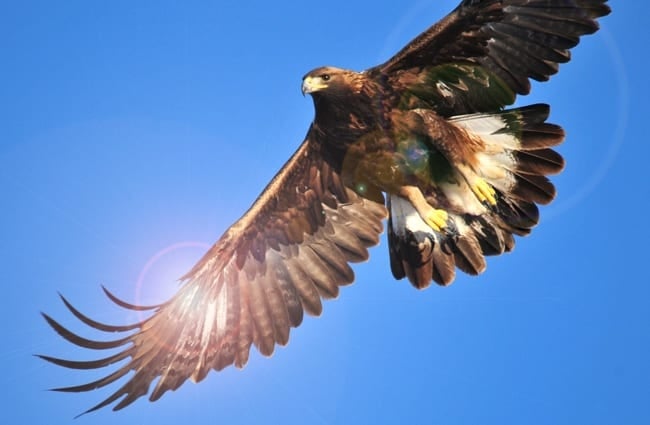
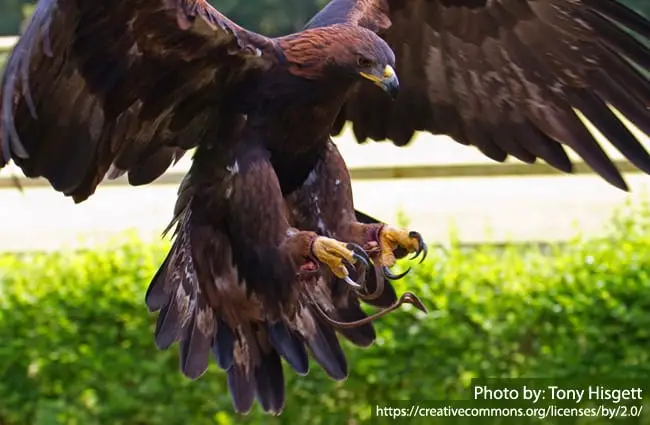
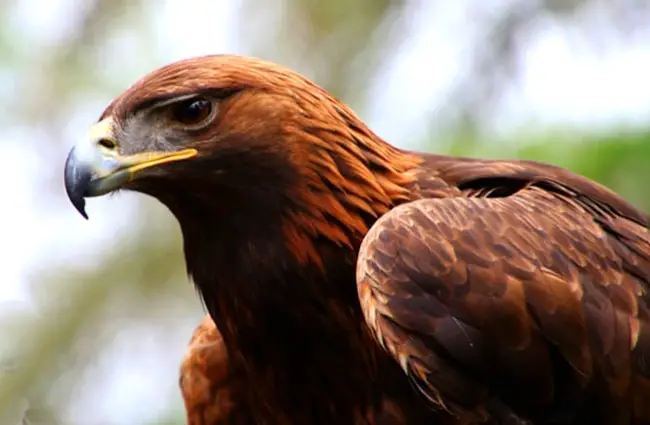

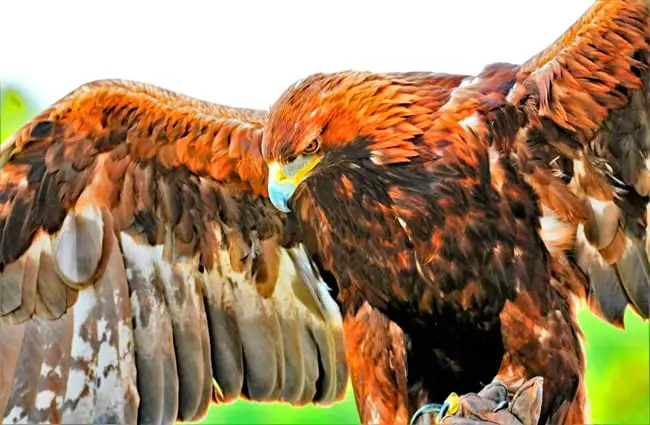

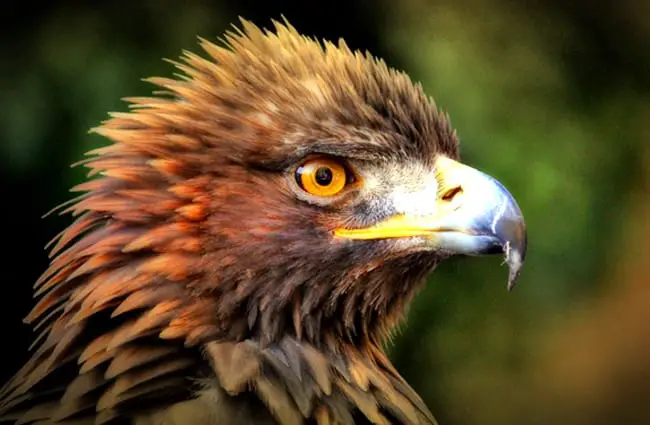
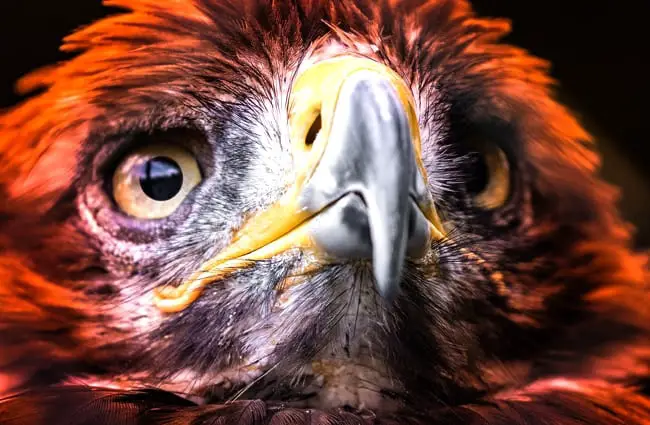
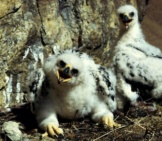

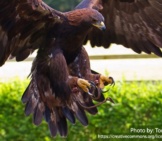



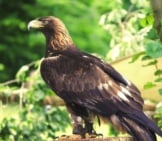


![Red Angus Closeup of a beautiful Red Angus cowPhoto by: U.S. Department of Agriculture [pubic domain]https://creativecommons.org/licenses/by/2.0/](https://animals.net/wp-content/uploads/2020/03/Red-Angus-4-238x178.jpg)


![Red Angus Closeup of a beautiful Red Angus cowPhoto by: U.S. Department of Agriculture [pubic domain]https://creativecommons.org/licenses/by/2.0/](https://animals.net/wp-content/uploads/2020/03/Red-Angus-4-100x75.jpg)

